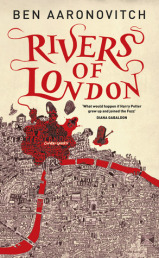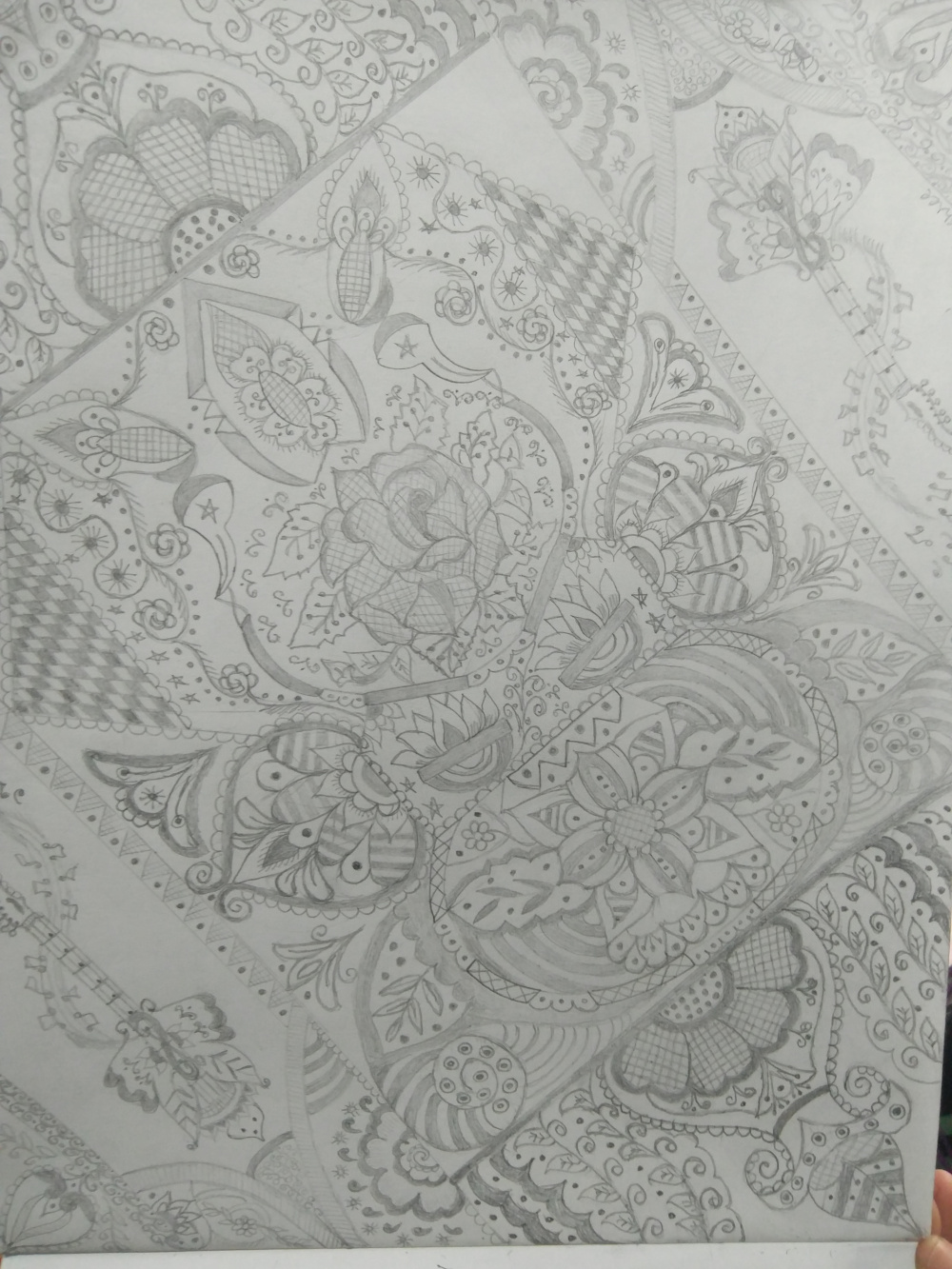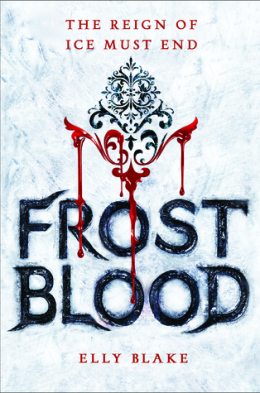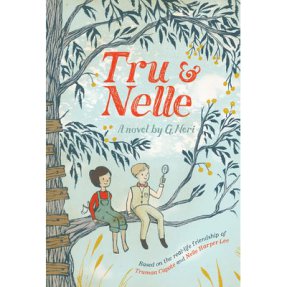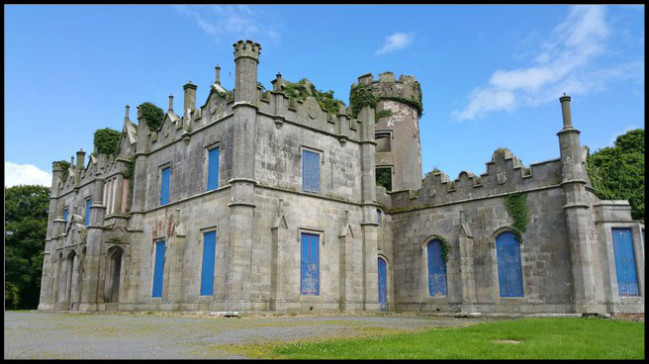
Necerne Castle is one of many Plantation Castles in Country Fermanagh – that is a castle built or acquired by English or Scottish settlers in the early 1600s. What differentiates this from many of the others including Tully, Monea, Crevenish and Portora is its two storey Tudor-Gothic south wing extension added in 1833, its relatively better state of repair (it was used until the late 1940s) and the striking blue wooden panels securing its windows and doors!
Specifically because it is in relatively good condition it is boarded up and its interior is not open to the public. I understand that the Tudor-Gothic part of the building has a Classical interior with Corinthian columns of scagliola (fake marble) in the entrance hall, perhaps not unlike the entry hall of Castle Coole in Enniskillen which can be visited.
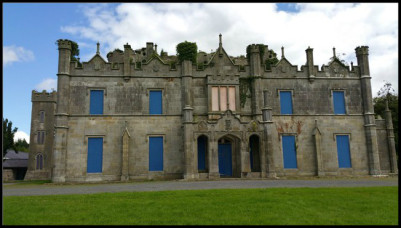

To me this castle cries out “convert me into a hotel.”Anyone interested in doing so (or more specifically with the money to do so) can contact the Fermanagh District Council, the current owners of the estate, as the building is for sale.
The castle was built by Gerald Lowther in 1615 on land awarded to Edward Warde by King James I in 1611 during the Plantation of Ulster. Warde an ‘undertaker’ planter was awarded over 6000 acres of land on what is now the outskirts of Irvinestown. This award was conditional on Warde/subsequent transferees undertaking to bring in English or Scottish settlers at the rate of 24 men per 1000 acres and their maintaining an army of a particular size in support of the Crown. The land had been forfeited in 1607 by Hugh O’Neil, Earl of Tyrone, who ‘hastily departed’ Ireland in the famous Flight of the Earls of that year.
Lowther’s estate passed to the Irvine family (after which the local town is now named) in 1629 and they remained there until 1922 when Major D’Arcy Irvine decided to leave for England. With him went the last remaining family connections with the castle and Irvinestown.
In the Irish Rebellion of 1641 (an unsuccessful attempt by Irish Catholics to wrest control of Ireland from the English and Scottish settlers or planters) the castle was attacked and the then owner, Christopher Irvine, and his family were forced to flee to Enniskillen Castle for safety. Castle Irvine was brunt down in their absence – to be rebuilt in 1651 on the family’s return to Irvinestown. While staunch Royalists and supporters of Charles I during the Irish Rebellion, in the Williamite Wars (1688-1691) the Irvines initially sided with James II. By the end of the wars they had switched their allegiances to William III, in whose service Gerald Irvine died.
In 1925 Captain Richard Outram Hermon, a bit of a party man from Sussex, England, bought the castle and turned it into a base for his large garden and shooting parties – shooting game and not the locals, that is!
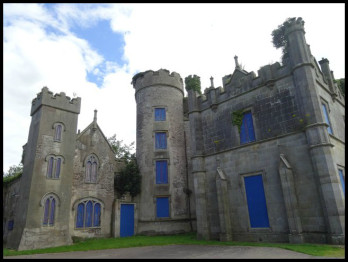
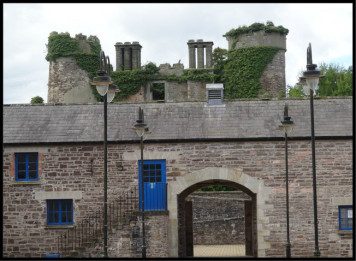
During WWII the castle was commandeered and used as a military hospital for United States and Royal Air Force servicemen based in County Fermanagh. All that remains today to link the castle with its WWII usage is a mortuary slab. More on that below.
It is unclear how the Castle (which was called Castle Irvine when inhabited by the Irvines) got the name Necerne. One story proffered is that Hugh Roe O’Donnell, an Irish chieftain, on one of his missions to discipline the O’Briens clan, who were collaborating with the English, sent his men to investigate what appeared to be a military fortification. They returned to say “Ni carn e” or there is no building there. Hence, the name Necarne. Legend has it that by the time O’Donnell reached the then more modest pre castle building the owners had covered it with sods from a nearby field – a field still known as ‘Sod Park’
Alternatively, the name may be a derivation based on Nakarney or Nakarna, the name by which the land was known in the early 1600s.
In addition to having a look at the castle do pop down and have a look at the pleasant stream running by, to the east of the castle.
The extensive outbuildings (many themselves listed buildings) plus a number of more recent additions were converted into the Ulster Lakeland Equestrian Park. Reputedly one of the finest equestrian centres in Europe, it seemed to be completely abandoned when I visited and as far as I can ascertain it, like the castle, is now deserted and for sale.
So, back to the Mortuary slab or as I put it:-
“So come up to the lab and see what’s on the slab”Rocky Horror fans will immediately recognise this quotation – it being Dr. Frank N. Furter’s invitation to Brad and Janet to come and inspect his latest creation – Rocky. I was reminded of this when I heard of a “slab” at Necarne Castle.
During World War II the castle was the United States Army 28th Station Hospital, in addition to a hosting Royal Air Force hospital for the nearby bases at Castle Archdale and Killadeas. All that remains today to evidence its medical, and indeed military, past is a stone mortuary slab lying in the shrubbery, and easily missed, off to your right hand side as you make your way up to the, now deserted, castle from the car park.
The hospital opened on 21 May 1942 – originally with 200 beds though later increased to 500 – and remained in use until 19th August 1944.
While American servicemen recuperated here prior to heading to Normandy I read that ‘one local farmer even allowed the ‘Yanks’ to use his field as a baseball pitch’! (Irvineclan.com).
Sadly, too many young men arrived here dead or died post arrival – enough such that the hospital sported at least ten of these mortuary slabs.
Lest my reader be concerned as to what might be on the slab at Necarne Castle today (or disappointed there is no Rocky thereon!) be assured there is nothing on it, as evidenced by my attached photograph.
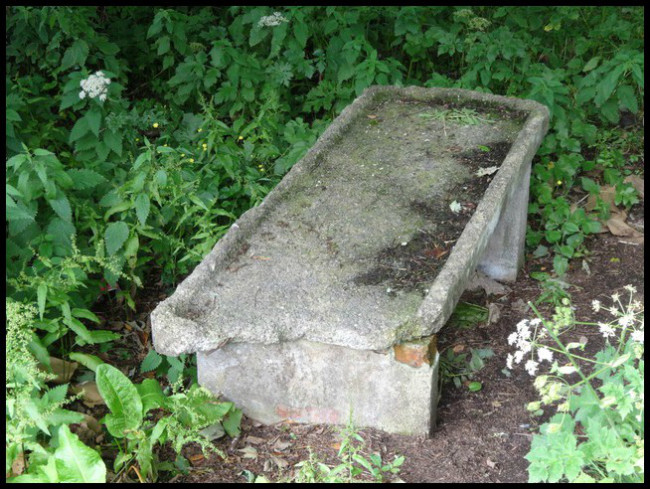
A rather bizarre and morbid item to retain as a reminder of the Castle’s role in WWII, don’t you think?
Entrance fee – Free -Grounds only
Address: Castle Street, Irvinestown
Directions: Approximately one kilometre from the centre of Irvinestown
This blog entry is one of a group (loop) of entries based on many trips to Enniskillen. I suggest you continue with my next entry – Irvinestown Old Church and Graveyard – or to start the loop at the beginning go to my introductory entry – “Fare thee well Enniskillen, ………..”
Advertisements Share this: